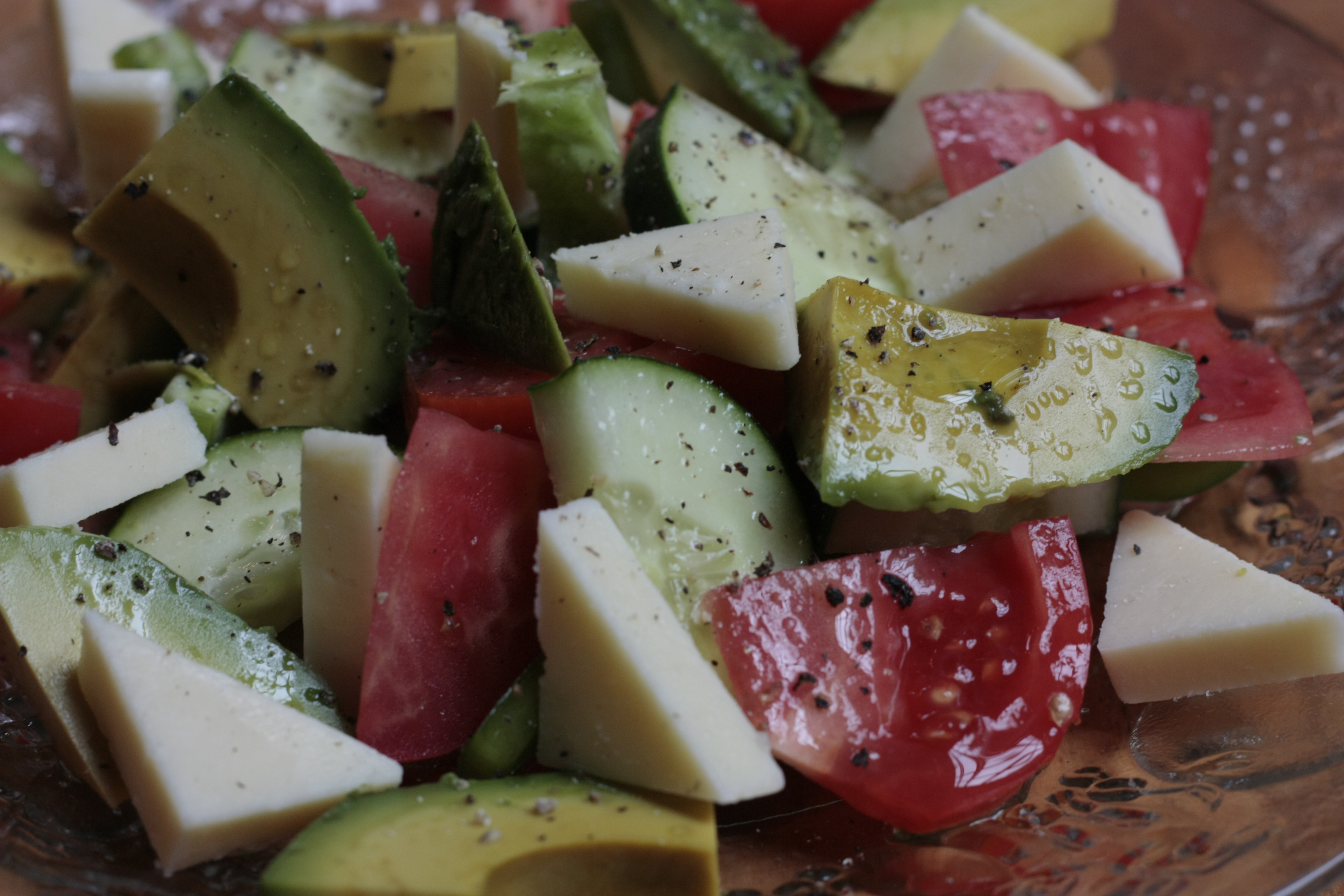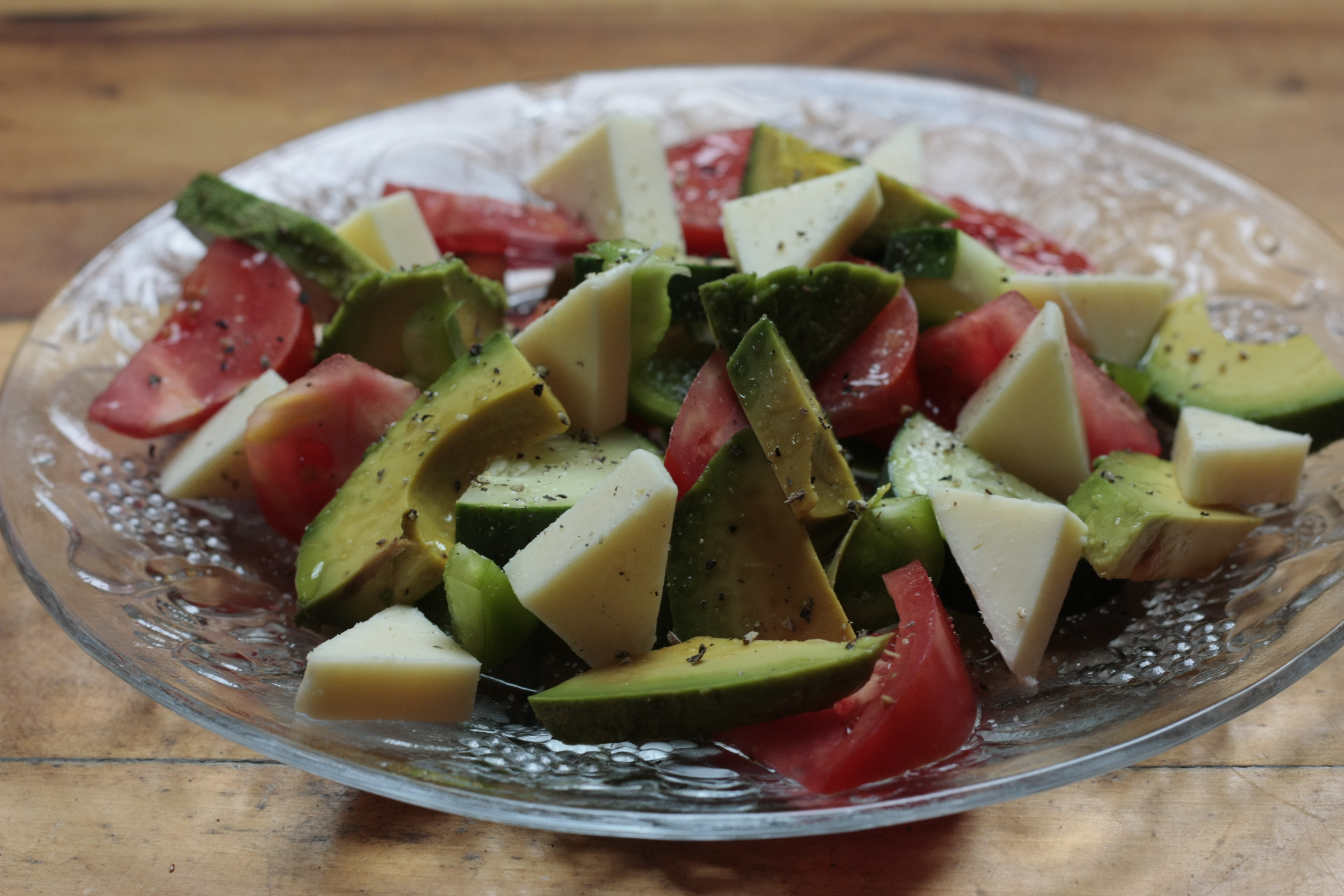Here is a quick and easy recipe for vegetable salad using any locally grown raw vegetables. This example uses organic tomatoes, cucumbers and green bell peppers grown in Ashe County, North Carolina. The vegetables were all purchased at a small-chain market that sources locally. Imported avocados are also included.
The cucumbers are cut into thick rings and then halved. The tomato stem rings are removed, then they are cut into wedges which are halved. The bell peppers are cut into thin strips. The avocados are in half, the pit removed and taken out of the skin with a spoon, then cut into bite-sized pieces.
The cut vegetables are assembled on plates. Drizzle with a favorite vinegar and seasoned olive oil or nut oil(in this case I used mead vinegar with lemon balm and basil-infused olive oil). Season to taste with sea salt and freshly ground black pepper. This type of salad is best at room temperature to allow all of the flavor from the vegetables to come forth.
This type of salad can easily become an entree by adding some grass-fed raw-milk cheese, shellfish or other seafood or fresh-water fish or other protein of choice. Almonds, walnuts or hazelnuts make an excellent topping. Other local raw vegetables like zucchini or yellow crookneck squash, onion and/or garlic, yellow and red bell pepper or shredded carrot and beet can be added or substituted. Fruits such as apple or pear can be included, too.

Eating as much locally produced as possible is important for variety, the local economy and the environment
A salad of this type should vary with the seasons and the region to make best use of the fresh, locally grown produce while it is at its prime. The vegetables should not be peeled to take advantage of the concentration of nutrients found there and which the plants use to protect themselves from insect pests and wounds.
Using as much locally grown food as possible ensures freshness, reduces energy used during packing and shipping and is good for the local economy. Eating local food also creates seasonal variety in any healthy whole food based diet by changing ingredients as the growing season progresses. Keeping the smaller farmers in business is very important considering the fierce competition from large factory farms in many parts of the country and is also a way to keep less popular heirloom vegetable and fruit varieties available.

